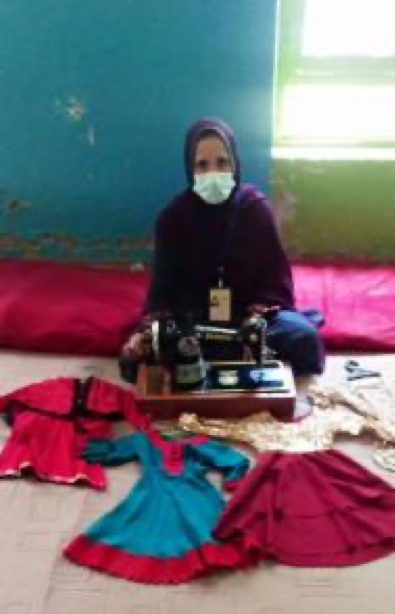Years after the US-led military intervention defeated the Taliban, around 2/3rds of Afghan girls still were out of school (Human Rights Watch, 2017a). Since regaining power in August 2022, the Taliban has banned girls from secondary and tertiary education again (Hadid, 2022). These events have intensified an already dire situation, leaving the future of Afghanistan’s women uncertain and jeopardizing the country’s developmental progress.
Prior to this, an Afghan government report (from 2015) indicated that the number of children attending school exceeded 8 million. However, Human Rights Watch disputed the accuracy of these figures in a report released a few years after (2017a). This is common among post-conflict governments due to displacement and unaccounted populations. This potential inaccuracy is noteworthy because it represents a negative trend in Afghan education as a positive one.

In addition to UN pressure, the Afghan government has legal obligations to supply education to its population. In the Convention on the Elimination of All forms of Discrimination Against Women (CEDAW), Afghanistan ratified that it would ensure women equal rights, including in education (Human Rights Watch, 2017b). This obligation highlights the need for Afghanistan to prioritize and uphold its commitment to equal education. The failure to do so directly violates Afghan women’s rights and impedes the country’s progress toward development.
The Taliban: Brief History
The Taliban was formed in the 1990s by Islamic guerrilla fighters who promised stability after years of conflict (Maizland, 2021). Their beliefs stem from the harsh interpretations of the Pashtuns’ pre-Islamic tribal codes, which require women to be covered entirely, have a male chaperone, and be denied education. In 2001, a U.S.-led invasion ousted this government, and Afghanistan began to see improvement. But by 2021, US troops began withdrawing from Afghanistan, and the Taliban were able to regain control of the country – immediately reinstating these codes.
Education under the Taliban
Afghanistan was already struggling to close gaps in education between boys and girls after the Taliban in 2001. When leaders removed women and girls from schools, this set the country even further back. Additionally, to deter women and girls from attending schools, the Taliban began targeted attacks, such as acid assaults, sexual harassment, and kidnappings (Human Rights Watch, 2017b).

Simultaneously, existing problems inside and outside Afghan schools were intensified.
Inside schools (Human Rights Watch, 2017a):
- Lack of female teachers
- Overcrowding
- Gender segregation
- Poor infrastructure (60% of schools do not have toilets/drinking water)
Outside school (Human Rights Watch, 2017a):
- Gender-based violence
- Partner violence
- Higher costs of attendance
- Increased rate of child marriage
What does this mean for development?
Excluding half a population from education significantly reduces a country’s development. Already in Afghanistan, this has resulted in:
- Losses of up to 5% of Afghanistan’s GDP due to restricted opportunities for women (UNDP, Maizland, 2021).
- Increases in women arrested for “violating” discriminatory policies (Amnesty International, Maizland, 2021).
- Higher rates of child marriage (Maizland, 2021).
- 3.5 million children out of school – 85% being girls (Human Rights Watch, 2017b).
These statistics, plus increasing child/maternal mortality rates, will deprive communities of significant contributions and lead to societal unrest. How does Afghanistan expect to move forward when all of these factors work together to keep women and girls from education?
What is being done?
Women for Women International (WFWI) is combating this endemic. Through this organization, women can join others like them and learn to improve their health, understand their rights, and continue their education (Women for Women International, 2023). WFWI is creating an environment of learning that aims to enhance women’s well-being. Although WFWI is focused on reaching sustainable development goal 5, they recognize that women play a crucial role in realizing all SDGs.

WFWI’s Stronger Women, Stronger Nations program has reached over 125,000 women in Afghanistan. This program has significantly impacted populations of women. One woman, Nasima, attests that since she joined this program, she learned basic math, how to save money, and began sewing dresses. She uses her extra money to buy food and items for her family (Women for Women International, n.d.). Similarly, women who graduate from the program report understanding their rights better and having taken action to share the effects of violence against women in their communities (Women for Women International, 2023).
WFWI was forced to pause aid due to the Taliban’s control. However, since December they have been able to reopen their community centers/schools at reduced levels. Working alongside local communities and UN agencies, WFWI continues to advocate to end this education ban (Women for Women International, 2023).
Education empowers women and girls to understand their rights and take action against violence while enhancing development. International organizations, like WFWI, must continue to work with Afghanistan to ensure women’s rights are protected and access to education for all is facilitated.
Donate: Women for Women International
References
Amiri, W. (2023, March 7). Women, Protest and Power- Confronting the Taliban. Retrieved from Amnesty International website: https://www.amnesty.org/en/latest/campaigns/2023/03/women-protest-and-power-confronting-the-taliban/
Hadid, D. (2022, December 21). Taliban begins to enforce education ban, leaving Afghan women with tears and anger. NPR. Retrieved from https://www.npr.org/sections/goatsandsoda/2022/12/21/1144703393/taliban-begins-to-enforce-education-ban-leaving-afghan-women-with-tears-and-ange
Human Rights Watch. (2017a, October 17). “I Won’t Be a Doctor, and One Day You’ll Be Sick” | Girls’ Access to Education in Afghanistan. Retrieved from Human Rights Watch website: https://www.hrw.org/report/2017/10/17/i-wont-be-doctor-and-one-day-youll-be-sick/girls-access-education-afghanistan
Human Rights Watch. (2017b, October 19). Afghanistan: Girls Struggle for an Education. Retrieved from Human Rights Watch website: https://www.hrw.org/news/2017/10/17/afghanistan-girls-struggle-education
Maizland, L. (2021, September 15). The Taliban in Afghanistan. Retrieved from Council on Foreign Relations website: https://www.cfr.org/backgrounder/taliban-afghanistan
Women for Women International. (n.d.). My Name is Nasima: Life Changing Lessons. Www.womenforwomen.org. Retrieved from https://www.womenforwomen.org/stories/my-name-nasima
Women for Women International. (2023). What We Do. Retrieved from Womenforwomen.org website: https://www.womenforwomen.org/what-we-do
Yousafazai, S. (2023, March 8). On International Women’s Day, Afghan women blast the Taliban and say the world has “neglected us completely.” Retrieved from www.cbsnews.com website: https://www.cbsnews.com/news/international-womens-day-afghanistan-taliban-women-protest-say-world-neglected-us/

